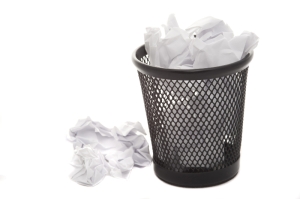 A couple of recent on-ice incidents got my attention. During a game between Toronto and New York, Maple Leafs forward Nazem Kadri lifted his right leg high in the air after getting bumped by Rangers defenseman Dan Girardi. Kadri went down, had his skate blade up, and got the back of the neck of Girardi. It wasn’t a deep cut but the incident took the steam out of the Air Canada Centre. The Flyers’ Luke Schenn had his head down when he was pushed into the boards by Avalanche forward Nathan McKinnon during a game. It was hardly a push on McKinnon’s part and Schenn put himself in a bad spot. But he went down and McKinnon got a 5-minute major and was kicked out of the game.
A couple of recent on-ice incidents got my attention. During a game between Toronto and New York, Maple Leafs forward Nazem Kadri lifted his right leg high in the air after getting bumped by Rangers defenseman Dan Girardi. Kadri went down, had his skate blade up, and got the back of the neck of Girardi. It wasn’t a deep cut but the incident took the steam out of the Air Canada Centre. The Flyers’ Luke Schenn had his head down when he was pushed into the boards by Avalanche forward Nathan McKinnon during a game. It was hardly a push on McKinnon’s part and Schenn put himself in a bad spot. But he went down and McKinnon got a 5-minute major and was kicked out of the game.
The recent acts by Kadri and Schenn trying to draw penalties through embellishment should be a lesson to young hockey players: diving can kill you or you can end up killing someone. Just ask Richard Zednik. In 2008, Zednik’s Panther teammate Olli Jokinen tried to draw a penalty by lifting his skate and inadvertently got the blade under the neck of Zednik. The cut Zednik suffered was more severe than Girardi’s. He had to be rushed to hospital and missed a considerable amount of time. Max Pacioretty is another example. The Canadiens forward got caught trying to get around the Bruins’ Zdeno Chara during a playoff game in 2011. But instead of getting out of the way, Pacioretty allowed himself to be drilled into the boards. Chara got ejected from the game and received some death threats from Habs fans.
Then there’s Steve Moore. I don’t have to repeat myself how his dive ended his career.
Diving happens in every sport. Players that do it are an embarrassment to the game. But it’s also dangerous particularly in hockey where you have skate blades, sticks, ice and boards that are solid as a rock to deal with. If this continues, one of these days a player will try to draw a penalty and it will end up getting someone killed. I understand it’s a competitive environment and you have to do what it takes to win. But is it really worth it to dive and risk endangering the lives of your opponents or teammates for a 2-minute power play? I can’t understand why players dive in the first place. Believe it or not, diving takes planning and practice. No one I know considers exaggerating an injury at the very last second. A lot of effort and energy is needed to dive. That could be better used to help improve a player’s ability to play hockey the right way.
Too bad there is no push to eliminate diving like there is with fighting. But I also believe people need to learn things the hard way in order for them to change their habits. Time will only tell if Kadri and Schenn will learn from their experience.



